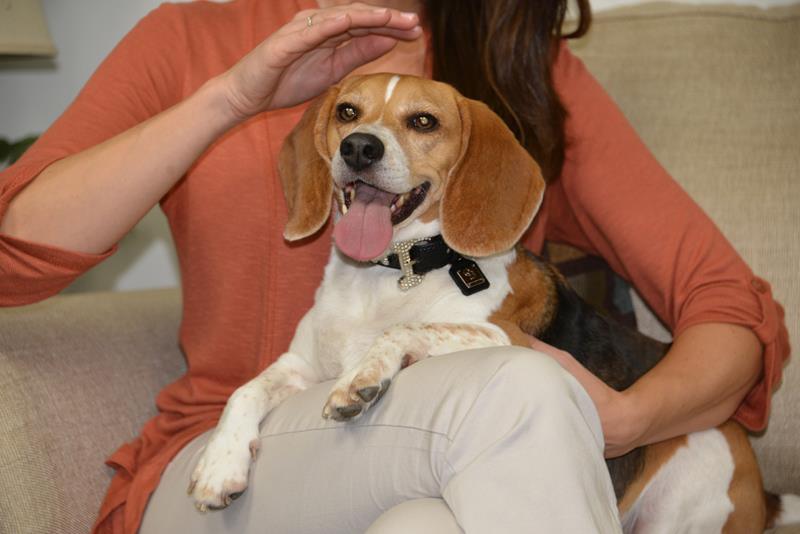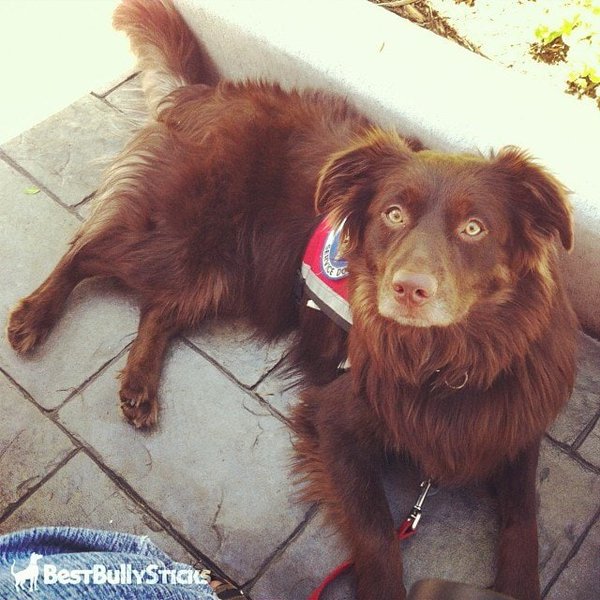Whenever you forget to submit an important document or miss an appointment, you definitely experience panic—a tightness in your stomach and a fast heartbeat. But nothing is more painful than witnessing your pooch suffer or struggle.
Your dog has been your greatest friend, and the pain your dog is experiencing has the capability to hurt your heart if you don’t know how to comfort him. Pain isn’t always physical, and it can’t always be alleviated by taking medication. Dogs, like humans, can experience embarrassment, sorrow, anxiety, and stress. Can pups, however, experience panic attacks?
Dogs, like people, can indeed suffer from panic attacks, and a sudden rise of fear characterizes these. Loud sounds and fighting with other doggies can induce panic attacks in dogs. Whatever the situation, you should be aware of which factors cause your pooch to have a panic attack and what you can do to prevent it.
Continue reading to learn everything you need to know about panic attacks in canines and how you can help your pup overcome this situation.
What Does A Panic Attack Look Like In A Dog?

Veterinarians believe that dogs, like people, can suffer from panic attacks. While anxiety is typical in dogs, panic attacks are more than just a little worried and afraid. Instead, they’re overflowing, intense reactions that are out of proportion to the risk they’re in.
A panic attack might happen out of nowhere and without notice, or it can happen whenever something stimulates one. Since the indicators are identical to other behavioral issues, you may not even notice your dog is suffering a panic attack.
The following are some of the most typical symptoms of a panic attack:
- Dilated pupils
- A rapid heart rate
- Loss of appetite
- Rapid breathing
- Drooling
- Sudden panting
- Trembling or shaking
- Excessive barking
- Vomiting
- Destructive behavior
- Trying to find a place to hide
- Climbing on the owner
- Howling or whining
Now that you have already figured out the signs and symptoms of a panic attack in dogs, so let’s now proceed to identify what causes it.
What Are The Causes Of Panic Attack In Dogs?
Even though most panic attacks in dogs are triggered by fear-response stimuli such as aggressive action, excessive noise, or violent threats, breakdowns of supportive factors are also a typical cause of stress and anxiety.
Dogs might exhibit negative emotions to the changes in their environment when they are left at home for long periods of time, when their food is changed suddenly or when walks become less regular.
Changes in their environment or home behavioral norms, whether deliberate or not, can throw your pooch for a loop.
What Are The Different Types of Anxiety In Dogs?
Given certain circumstances, your beloved pet may and will become anxious. You may have seen it during fireworks shows on July 4th or when your dog’s on the way to the vet. It can also be evident after you’ve left your dog for a long period of time or while he’s locked in a crate.
Noise anxiety, travel anxiety, confinement anxiety, and separation anxiety are the four major types of anxiety in dogs that cause the symptoms listed in this article. Each of them, if taken to extremes, can trigger panic attacks in dogs.
Next, let’s now discuss each of the types thoroughly.
Noise Anxiety
Loud noises can shock anyone and even make some people feel anxious. This is especially true in dogs compared to people because their sharp hearing can take up a larger variety of noises and hear what people hear at a higher intensity.
Don’t underestimate a dog’s sense of hearing. A dog’s ear can detect sounds with a decibel range of -5 to -15, which is often too soft for humans to hear.
Ambulance sirens, exploding balloons, gunshots, firecrackers, or even a thunderstorm might thus drive your dog into a panic. Your dog will shake, hide, and bark excessively in an attempt to protect its sensitive ears from the loud assault.
Travel Anxiety
Some dogs enjoy long car rides, while others never seem to feel completely at ease in one. Imagine driving at 100 mph with no idea how or why, and you’ll get a sense of how your dog feels while traveling in the car.
Apply that thought and multiply it by 20 when you board your pooch on a plane. The truth is that your lovely pet will have no idea what’s going on and may grow anxious in these strange means of transportation.
It is essential to be aware of dog travel safety tips to ensure that your dog does not become anxious or traumatized while traveling.
Confinement Anxiety
Dogs aren’t built to live in confined spaces for extended periods of time. They need much engagement as well as the freedom to move around in open spaces like humans.
If you’ve opted to crate-train your pup, keep this in mind because your dog will be more likely to develop anxiety if it is in a confined space for too long.
When dogs are put in environments where they are trapped in confined or small spaces, they may develop panic attacks. Confinement anxiety can be triggered by putting your pooch in a dog pen, fenced area, or a kennel.
Separation Anxiety
Separation anxiety is characterized by a sudden and strong fear of being alone. Leaving your pup on its own for extended periods of time can cause canine separation anxiety. When you prepare to leave the house, your dog may show signs of a panic attack.
Your dog loves you more than anyone and anything else in the world, and when you’re gone, worry might set in, especially if it is a dependent dog breed. Read on to find out what dog breeds are prone to anxiety.
Loneliness might be overwhelming at times, resulting in a panic attack on your dog. Separation anxiety makes it more likely for dogs who have lost their dog parent to have panic attacks.
How Long Does A Panic Attack Last In Dogs?

Panic attacks are usually short and disappear if a dog receives some attention or is soothed. A dog’s anxiety grows stronger as the panic attack lasts longer. This could lead to more aggressive coping mechanisms.
If your dog has suffered a panic attack, continue reading this section so you can learn more about the treatment and recovery process.
How Are Dogs With Panic Attacks Get Treated?
Suppose your dog may be having a panic attack and it exhibits any of the symptoms listed in this article. Exercise, prescription anxiety medication, and, most importantly, an abundance of attention and love from you, their dog parent, are all options for treating panic attacks in dogs.
If you’re not an expert, the best method to treat your pet with panic attacks is to consult your trusted veterinarian, who can help you recognize the panic attacks your dog is experiencing, as well as their possible reasons and triggers.
Your vet will also assist you in determining whether the attacks are purely temporary or whether they are posing a severe threat to your dogs. Medical disorders that could cause your dogs’ symptoms will also be checked out.
A treatment plan will be given to you by your veterinarian. However, the most effective treatment for panic attacks in canines is a mixture of training, preventive techniques, and, in rare instances, medication.
Can My Dog Recover From Panic Attack?
Most dogs can recover from panic attacks. The best part is that recovery starts once treatment is given, so you may notice changes in a matter of days.
However, it may take some time for your pooch to adjust to a new place, along with any medication to take effect. However, your pooch may be totally recovered in a matter of weeks or months.
Panic attacks can be controlled by engaging with your pooch to help reduce anxiety levels. However, it may take a bit of time and patience. If your pooch is still having anxiety issues, there are a lot of dog therapists who may be able to help.
What Do I Do If My Dog Has A Panic Attack?
Maintain a cool demeanor, speak to your pup in a soothing tone, and, if necessary, initiate a positive physical connection. Since your dog looks to you for behavior approval, keep in mind that your actions and attitudes have a direct impact on their mood.
Since no dog wants to be afflicted with canine panic attacks, it’s necessary to acknowledge that their stress and anxiety are unavoidable. Punishing your pup for having a panic attack can worsen the situation, leading to increased stress and more panic attacks.
Now that you know what to do if your dog has a panic attack, so let’s talk about how to care for your dog after having a panic attack.
How Do I Care For My Dog After Having A Panic Attack?
If the panic attack lessens, take your pooch outside on a leash to distract and stimulate the mind to focus on something else. If panic attacks become more regular or severe, veterinarian help is likely required. You may also make an appointment with a licensed behavioral trainer.
Kindly seek assistance as soon as possible. Not only is it difficult to live with fear and anxiety, but the more you wait, the more difficult it will be to overcome.
However, it’s never too late to get assistance. You should also refrain from creating a stress or anxiety response until you receive assistance.
Exposing your dog to what makes them uneasy on a regular basis will not cause them to get acclimated to it. All you’re doing is adding to the bucket of terrible experiences, which will be harder to overcome later.

How To Prevent My Dog From Having Panic Attacks?
To prevent your dog from having panic attacks, you should first know what causes them anxiety or stress. You should also make sure a reputable veterinarian checks your dog regularly for any health conditions that could be causing the dog panic attacks.
Maintain as much consistency as possible in your dog’s routine, including their feeding time and exercise routine. If your dog suffers from noise anxiety, keep them away from loud noises like the radio or television.
If you know or believe that your dog’s lifestyle is about to change, make sure you give them plenty of time to adjust. Any changes in your dog’s routine, such as relocating to a different home or even going to dog daycare, fall under this category.
Are Some Dog Breeds Prone To Anxiety?
Some dog breeds are much more prone to anxiety and panic attacks. Separation anxiety is a common behavioral problem in dogs, especially newly adopted pups, dogs, and rescue dogs. However, when it comes to certain types of anxieties, there are likely distinctions between breeds.
What Dog Breeds Are Prone To Separation Anxiety?
You might be curious if your dog’s breed is on the list of breeds prone to anxiety if you’re thinking about adopting a puppy or if your dog seems to be suffering from separation anxiety. Please remember that canines are individuals, and thus, the variations in separation anxiety are expected even within breeds.
The following are the list of dog breeds that are prone to separation anxiety:
- Border Collie
- Toy Poodle
- Labrador Retriever
- German Shepherd
- French Bulldog
- Bichon Frise
- Italian Greyhound
- Cocker Spaniel

What Dog Breeds Are Prone To Noise Anxiety?
Even though all canines are likely to experience anxiety, particularly when exposed to strangers or loud noises, certain dog breeds are more prone than others.
Some breeds are more sensitive to noise than others, which could be because of their heightened hearing abilities.
The following are the list of dog breeds that are prone to noise anxiety:
- Spanish Water Dog
- Miniature Schnauzer
- Wheaten Terrier
- Shetland Sheepdog
- Lagotto Romagnolo
Can My Dog Sense My Anxiety?
Yes, your dog can sense your anxiety, and it may also affect them.
After all, there’s got to be a reason why you’re anxious. When you’re anxious, your dog is likely to feel less secure and uneasy as well.
They may also begin to act in a different manner when they discover that you have an anxiety disorder or experiencing a panic attack.





